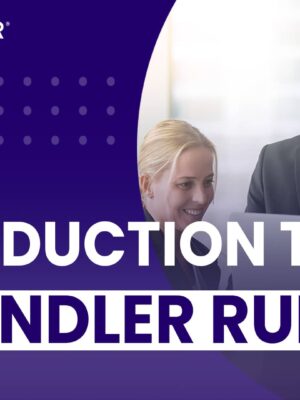Navigating the Changing Landscape of Sales

Is it time to recalculate your approach to sales training and development?
Have you ever tried navigating your way through unfamiliar terrain without GPS? If you have, you know it’s a stressful experience. If you’re driving with only an old-fashioned paper map to guide you, and for some reason you’re forced to do without the familiar, comforting digital reassurance that you’re on the right track to reach your destination by a certain point in time, you’re likely to wind up frustrated, late – or maybe even lost. Sure, people used to navigate this way all the time – decades ago. But why, in 2024, would anyone choose to?
Traditional sales training models remind me a lot of taking part in a complex, back-roads, cross-country auto race … and bringing along only a vintage, foldable paper map to aid us in our navigation. We just won’t get the real-time insights and recalculations needed to cope with a rapidly changing environment and arrive where we need to – ahead of the competition. Could we complete the course without having a nervous breakdown? Maybe. But why would we pretend that our paper map can guide us effectively through a whirlwind of changing “road conditions” – including new selling technologies and constantly shifting buying behaviors? And we can probably assume that at least some of our competition will be using the latest navigation tools. Does it really make sense to give them a head start and let them move faster?
Let’s take a little journey through this metaphorical sales landscape and see what the terrain looks like in 2024.
Detours and Roadblocks in Traditional Sales Training
Stalled Training Content: Traditional sales training and development is a bit like of getting stuck in an endless traffic jam. Lengthy processes like content creation, approval, and distribution mean that by the time the content hits the road, the destination might have already shifted.
Fixed Onboarding Routes: Traditional training often sticks to familiar, long-established content paths. This means the sales team is deprived of the the agility required to adapt to emerging detours, like new tech trends or sudden shifts in customer behavior.
Resource Roadblocks: Regularly updating training content requires time, expertise, and financial resources. These act like unforeseen toll booths slowing down the sales team.
Unmapped New Roadways: Modern tools like AI, CRM systems, social selling, and chatbots have paved new highways for sales interactions. Outdated training models may not even have them on the map.
Warning Signs on Your Sales Dashboard
Do you and/or members of your sales team currently ….
- … feel overwhelmed by the pace of technological changes?
- … find that economic turbulence has changed the selling landscape you’re familiar with?
- … face challenges in integrating AI, remote work, or other disruptive elements into your strategy?
- …worry about competitors zooming ahead while you’re still figuring out the route?
- … see signs that your veteran salesforce may be struggling to make the sharp turn needed to keep up with the tech curve?
Many familiar old roads are closing … which means sales enablement and training teams are going to have to reroute. That’s what your dashboard is trying to tell you. Are you sure you want to ignore that flashing red “Check engine” light?
- 74% of buyers now explore online paths before making purchase decisions. (Forrester)
- Salespeople with tech tools that support social selling are cruising at 77% higher speeds than their peers without them. (LinkedIn)
- Shockingly, 40% of sales teams are still charting their routes using traditional methods like Excel or pen and paper. (HubSpot)
Sandler’s Advanced GPS System
At Sandler, we’ve installed a next-gen GPS for sales training called the Sales Development Series.
With cutting-edge input from 400+ trainers and sales we’re able to recalibrate based on the latest trends and innovations. Our real-time feedback loops with our clients, drawn from over 50,000 salespeople worldwide, ensure our turn-by-turn instructions are always up-to-date and road-tested. And with our thought leadership updates – be it podcasts, blogs, or webinars – we’re always scouting the horizon for what lies ahead and looking for the course-correction that will keep you and your team ahead of the rest of the field.
We believe modern sales training should be like a state-of-the-art GPS:
- Equip salespeople with a detailed map, ensuring they’re as informed about the buyer’s journey as the buyer is about their desired destination.
- Provide real-time updates, drawing from best practices across multiple industries, not just yours.
- Make content accessible on-the-go, ensuring salespeople have guidance exactly when they need it.
- Leverage technology as a co-pilot: enhancing the journey, not introducing unnecessary detours.
- Treat time as the ultimate resource … so you and your team avoid wasting it on distracting, disappointing roadside attractions with little substance, value, or staying power.
In an ever-changing landscape, you can’t rely on outdated maps. The future of sales training is all about constant recalibration, ensuring you’re always on the fastest, most efficient route. That’s what Sandler is committed to … and why Sandler continues to be the world’s most popular and most effective sales training organization. Want to learn more about installing Sandler as your team’s GPS? Let’s connect.








